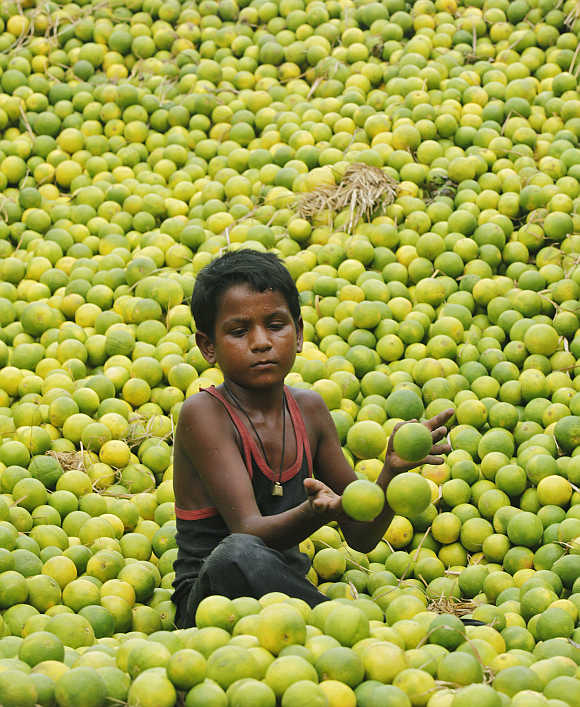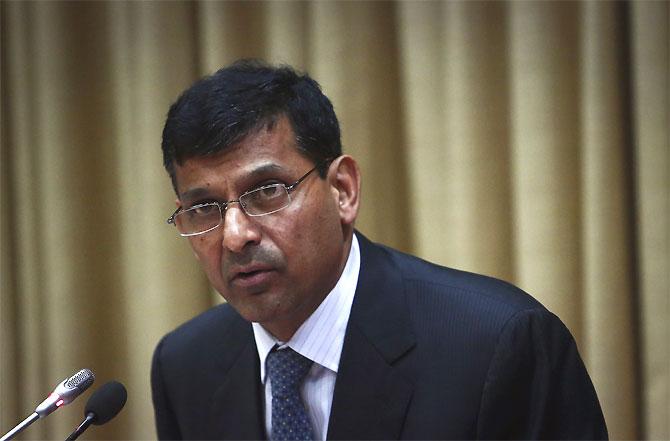
Economic data in coming days will likely offer further evidence of weak growth and high inflation, complicating the Reserve Bank of India's mission of cooling prices without worsening the slowdown and adding to the government's difficulties as it heads into an election season.
Asia's third-largest economy has been caught in a situation which some analysts define as akin to stagflation for the past three quarters -- with economic growth stuck below 5 percent and prices rising at a fast clip.
Industrial output data and inflation numbers to be released on Monday will show the same trend, two Reuters polls of economists showed.
That's a worry for Prime Minister Manmohan Singh's Congress party as it campaigns for five state elections starting in November, a warm up for national elections due by next May.
The opposition Bharatiya Janata Party has gained momentum in recent months thanks in part to the weak economic performance of Singh, a veteran economist and reformer.
…

The government is hopeful the economy will start to recover by the end of the year on higher farm output and exports. But Friday's data will likely add to Singh's woes, showing production from mines and factories grew by just an annual 2 percent in August, slower than July's 2.6 percent rise, according to one of the surveys.
Output contracted 0.2 percent between April and July, the first four months of the fiscal year 2013/14.
More pain is expected on Monday, when another set of data is likely to show wholesale prices rose 6 percent in September, a tad below a six-month high of 6.1 percent in August. Consumer inflation, also due on Monday, probably quickened to 9.60 percent last month from 9.52 percent in August, the poll showed.
…

"India is likely to face low growth and high inflation for some time," said Daniel Martin, Asia Economist at Capital Economics in Singapore, who expects the Reserve Bank of India (RBI) to increase its repo rate by another 25 basis points later this month.
"A higher repo rate will hold up the economic recovery. It is a difficult situation for the central bank."
Economic growth has averaged 4.6 percent between the fourth quarter of 2012 and the second quarter of 2013.
Headline inflation, measured by wholesale prices, averaged around 7 percent in the same period -- way above the central bank's perceived comfort level of 5 percent.
…

Inflationary Worries
Worries over high inflation led new Reserve Bank of India chief Raghuram Rajan to surprise markets in his policy review last month with an interest rate hike. Economists are now split over whether Rajan will hike rates again at the next review on October 29.
If inflation data does come in line with expectations, the odds for another hike at the October review will only increase.
Even though India is stumbling through its worst economic crisis since 1991, Rajan has clearly signalled he would focus on price stability, which he sees as a necessary condition for lifting economic growth from a decade low.
Inflation is expected to come down in coming months as a slowing economy is likely to keep demand-driven price pressures in check and as this summer's strong monsoon rains may eventually cool food prices.
Yet, price risks persist. The benefits of a sharply weaker exchange rate and adjustments in administered prices of fuel are still incomplete.
Although the rupee gained 5 percent last month, it is still down around 10 percent this year against the dollar, meaning higher import costs for items such as oil, fertilizer, pulses and edible oil in rupee terms.
The rupee hit record lows in late August, pressured by the country's gaping current account deficit and a general exodus of global investors from emerging market assets.
…

RECOVERY IN SIGHT?
In its bid to revive the economy ahead of polls, Singh's government has decided to inject capital into banks so they can offer cheaper loans for purchases of items such as bikes, fridges, washing machines and televisions.
The move is aimed at boosting production in the consumer durables sector, which has failed to register growth since last November.
A pick-up in merchandise exports, aided by a recovery in global economy along with the rupee depreciation, has bolstered the government's hopes for an economic rebound in the quarter to end-December.
Singh is also counting on the prospect of strong farm output for an economic boost. The sector is expected to post annual growth of about 5 percent this fiscal year, which should lift rural incomes and increase demand for goods and services.
"Strong exports and a rebounding farm sector will only help at the margins," said Martin of Capital Economics. "India's recovery largely depends on a revival in investments."